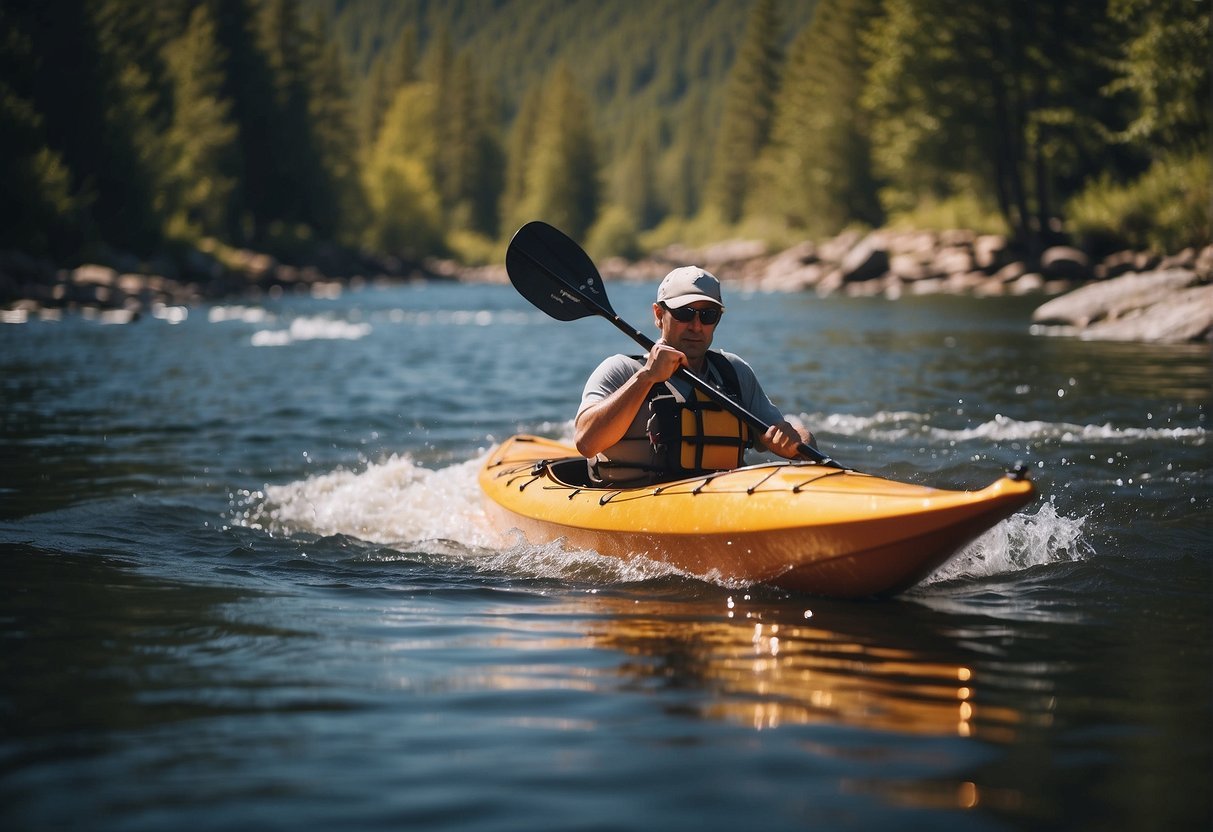📦 FREE Shipping
How Many Calories Does Kayaking Burn in 2024: Experts Explain

Dive into water sports and fitness with our in-depth look at a popular aquatic activity. “How Many Calories Does Kayaking Burn: Experts Explain” the calorie-burning potential of this fun and engaging exercise.
Whether you’re a seasoned paddler or a curious beginner, discover how kayaking can contribute to your fitness goals.
How Many Calories Does Kayaking Burn?
What is Calorie Burn?
Calories are the energy currency your body uses to fuel physical activities, including kayaking. When you paddle through the water, your body burns calories to supply the muscles with the needed energy.
This calorie burn can be measured in terms of calories per hour or minute, giving you the flexibility to track your expenditure over different durations of your kayak adventure.
Factors Affecting Calorie Expenditure
Several factors determine the number of calories you burn while kayaking:
- Weight: Your body weight plays a significant role. The more you weigh, the more calories you’ll burn.
- Intensity: Intense paddling increases your heart rate and calorie burn.
- Duration: The longer you kayak, the more calories you’ll use up.
- Technique: Efficient paddling engages more muscle groups, upping the energy cost.
- Condition: Rougher waters require more effort, leading to higher calorie expenditure.
Measuring the Burn
To estimate the number of calories you burn kayaking, the MET (Metabolic Equivalent of Task) value, which represents energy cost, can be quite helpful. The Compendium of Physical Activities provides MET values for various activities, including different intensities of kayaking.
For example:
| Kayaking Intensity | MET Value |
|---|---|
| Moderate | 5 |
| Vigorous | >6 mph = 12.5 |
Calculation Method:
Calories burned per minute = (Your weight in kg * MET value of kayaking * 3.5) / 200
Calories burned per hour = Calories burned per minute * 60
If you’re a person weighing 180 pounds (approximately 81.6 kg) and you’re enjoying moderate-intensity kayaking with a MET value of 5, your calculation will look like this:
Calories burned per minute = (81.6 kg * 5 MET * 3.5) / 200 = 7.14
Calories burned per hour = 7.14 * 60 ≈ 428Benefits of Kayaking for Weight Loss

Kayaking vs. Other Cardio Activities
When compared to other cardio activities, kayaking stands out for its calorie-torching potential. For example, moderate kayaking can burn about 283 to 500 calories per hour, depending on your weight and workout intensity.
In contrast, activities like walking or running at a moderate pace also promote calorie burn, but they might not match kayaking, especially if you are engaging in vigorous kayaking efforts.
Here’s a brief comparison:
| Activity | Calories Burned Per Hour (155-pound person) |
|---|---|
| Walking (3.5 mph) | Approximately 267 calories |
| Running (5 mph) | Approximately 606 calories |
| Kayaking (moderate) | Approximately 283 to 500 calories |
Long-Term Weight Loss with Kayaking
Sustaining weight loss is about consistent physical activity and enjoying your workout—and kayaking checks both boxes.
It’s a low-impact exercise that reduces the risk of joint stress, making it sustainable for long-term fitness plans. Moreover, it aids in building muscle strength, particularly in your upper body, core, and legs, contributing to a higher metabolic rate even when you’re off the water.
The varied exercise intensity kayaking offers—from a leisurely paddle to a challenging row—means you can adjust your workouts to match your fitness goals.
Optimizing Your Kayaking Workout

Setting Realistic Goals
Begin by evaluating your current fitness level and identifying specific, achievable milestones. This could be anything from increasing your kayaking duration by 15 minutes each session to aiming to kayak thrice a week.
- Intensity: Aim to vary your paddling speed. Intersperse bursts of high-intensity paddling with periods of moderate effort to engage different muscle groups and boost calorie burn.
- Duration: Gradually extend the time spent kayaking each week. This increases endurance and overall calorie expenditure.
- Muscle Groups: Focus on using your core, back, arms, shoulders, and legs for a full-body workout. Toning these areas not only supports better paddling form but contributes to a more balanced fitness profile.
Integrating Kayaking into Fitness Routine
To make kayaking a consistent part of your fitness routine, consider the following pointers:
- Exercise Variation: Pair kayaking with other physical activities like cycling or jogging to target various muscle groups, including your upper body and legs.
- Consistency: Schedule regular kayaking sessions, aiming for at least two to three times per week to maintain fitness and build up your shoulder muscles and upper body.
- Competition: Inject an exciting challenge by participating in kayaking competitions, which can augment your workout intensity and encourage you to push your limits.
FAQ:
Is kayaking good exercise to lose weight?
Kayaking is an excellent exercise for weight loss, combining cardiovascular activity with strength training to burn calories and tone muscles.
How many calories does 40 minutes of kayaking burn?
Depending on your weight and effort level, you can burn between 160 and 240 calories in 40 minutes of kayaking.
Is kayaking better than running?
Whether kayaking is better than running depends on your goals; kayaking is low-impact and strengthens the upper body while running is high-impact and great for leg strength and endurance.
Does kayaking give you a workout?
Definitely, kayaking provides a solid workout, targeting your arms, shoulders, core, and back while improving cardiovascular fitness.
If this article about the question: “How Many Calories Does Kayaking Burn” helped you, don’t forget to leave us a comment down below about what you think of the article.


